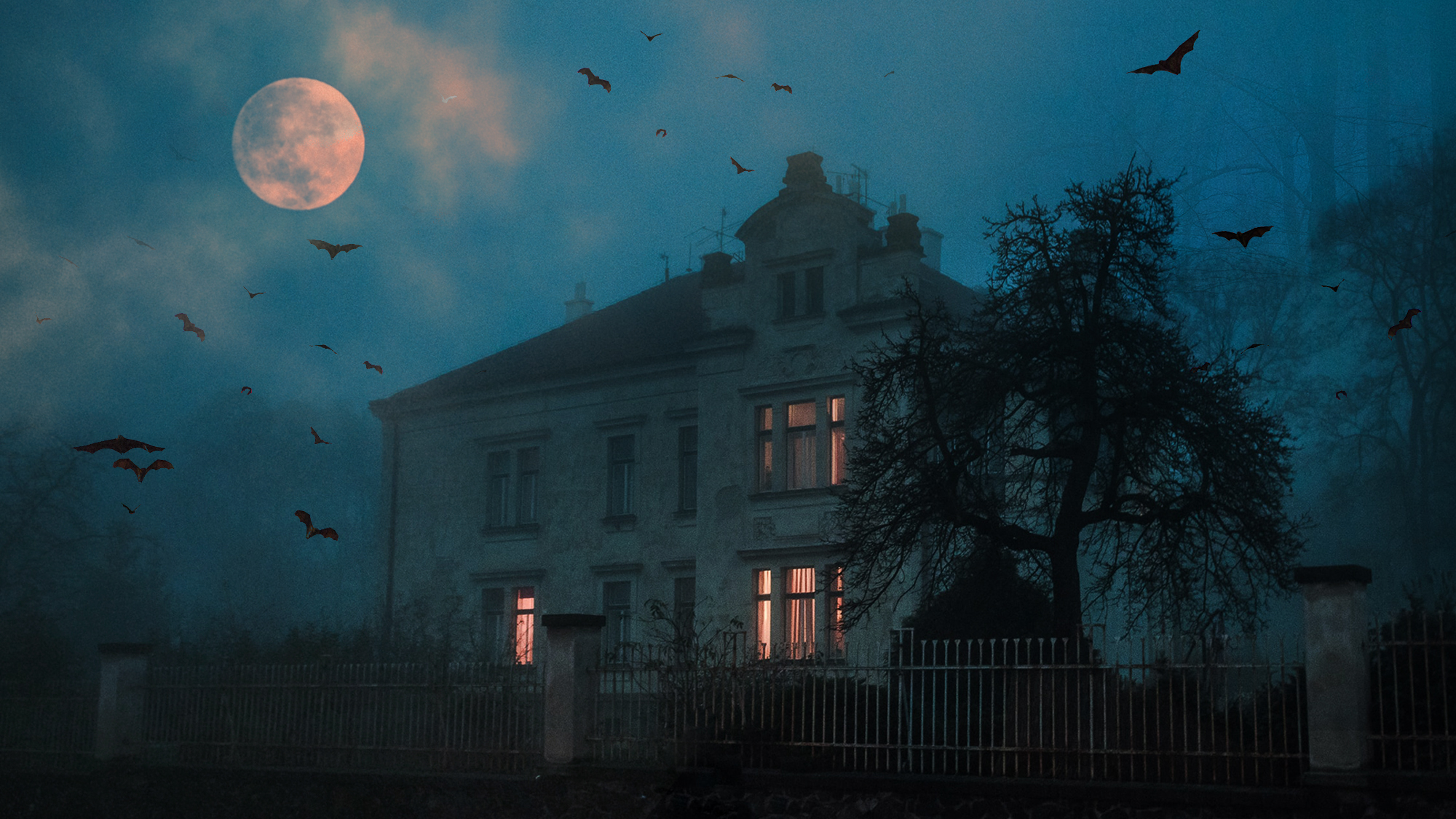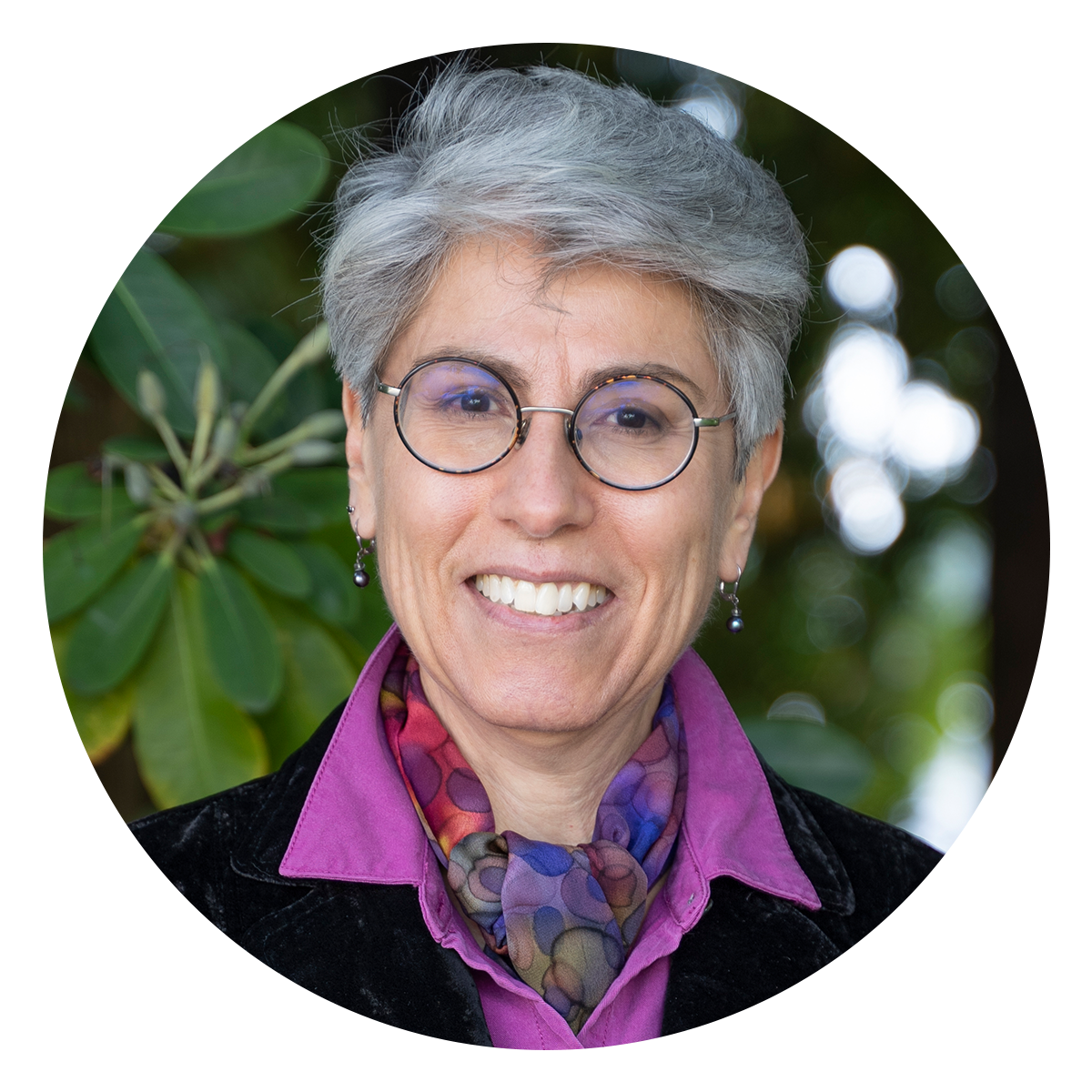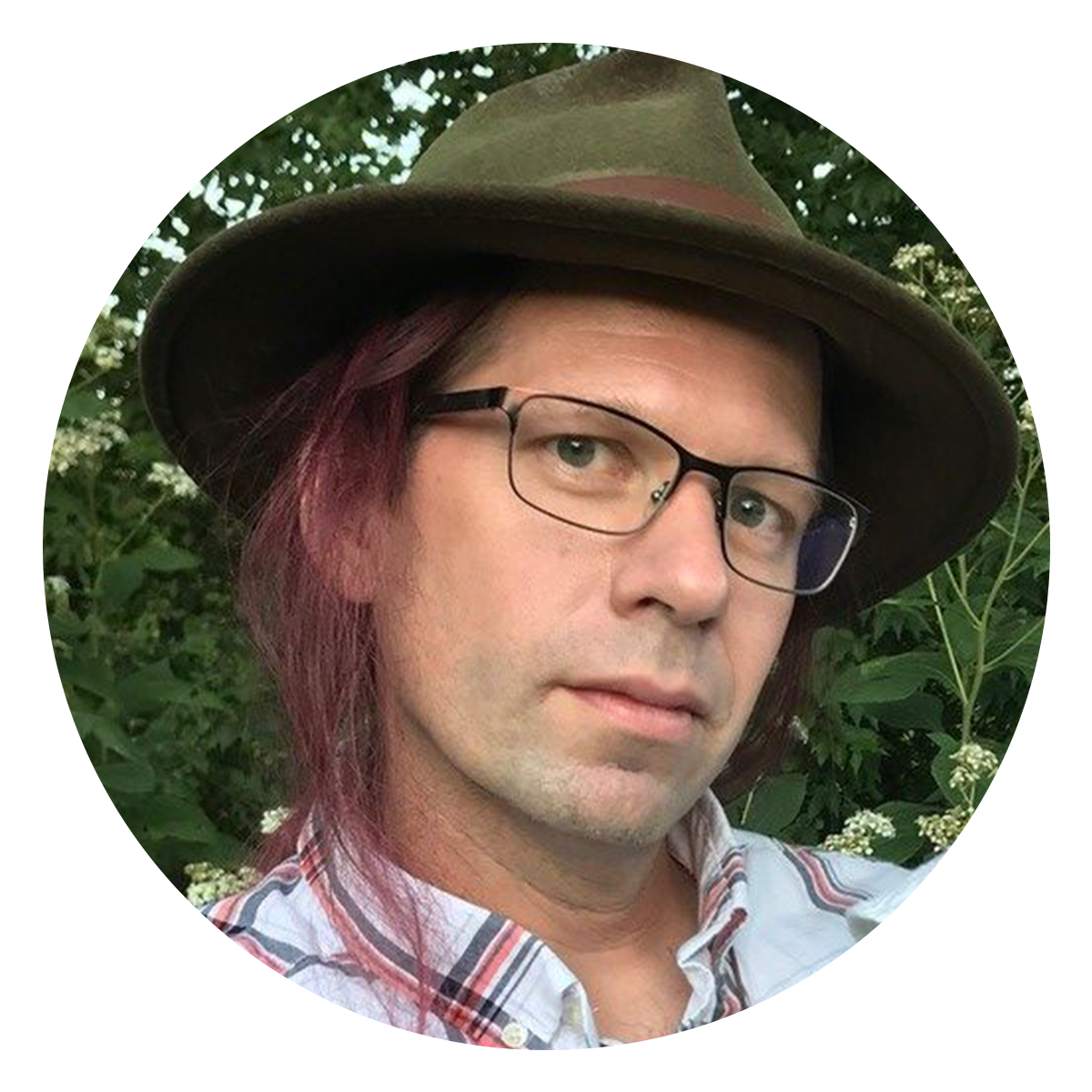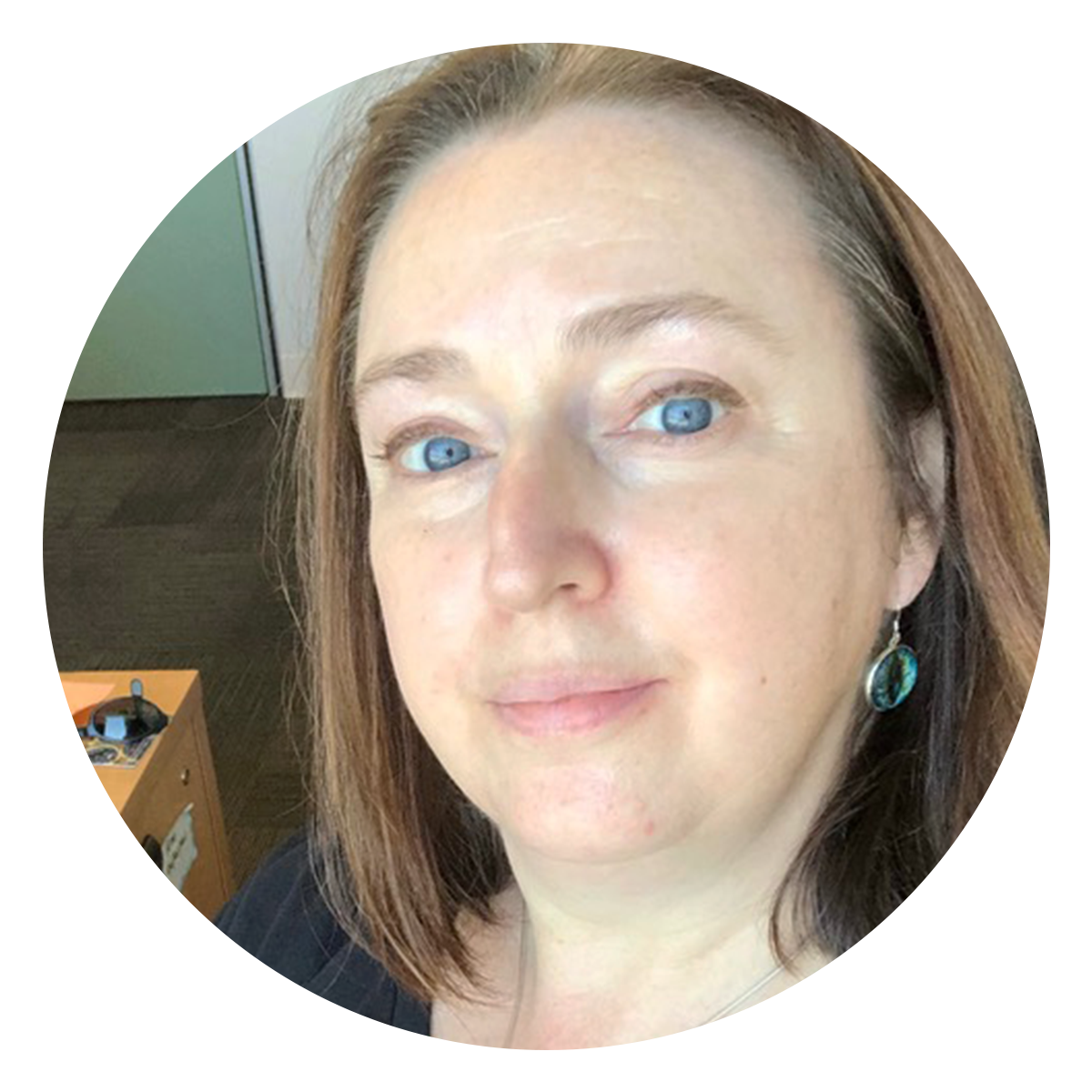

Why does studying Halloween and the supernatural world enhance our understanding of broader historical and cultural trends? How does the practice of Halloween provide a space for individuals to explore and express different aspects of their identity? Halloween has come a long way from its origins as a harvest festival. Today, it’s a complex celebration shaped by supernatural encounters, folklore, myths, and pop culture. Along the way, it has also collected its fair share of misconceptions and stereotypes.
Arts faculty members Dr. Sabina Magliocco, Dr. Tim Frandy, and Dr. Kim Snowden provide insights by taking a deep dive into Halloween’s myths and realities. They also share how their classroom discussions and research are evolving with the times.


Dr. Sabina Magliocco (she/her)
Professor and Associate Head, Department of Anthropology
Sabina is a cultural anthropologist who specializes in religion, folklore, and expressive culture. “Halloween is a celebration of everything supernatural in Western culture, from ghosts and witches to vampires and zombies, so it’s only natural that I became interested in this cultural expression,” she expounds.
What are some fascinating aspects of Halloween history students can explore in your course?
Halloween is an example of “symbolic inversion,” a temporary suspension of everyday rules and behavioural norms. It offers a space where boundaries can be challenged. People disguise themselves as scary or shocking characters, kids run around at night demanding candy from strangers, low-level vandalism like setting off fireworks or putting toilet paper in trees are overlooked by authorities. In any other context, these acts would not be tolerated.
One of the traditions associated with Halloween that we explore in my course ANTH 206 is the practice of legend-tripping: visiting allegedly haunted sites while telling spooky stories. While legend-tripping can happen any time of year, it’s especially popular at Halloween time. Legend trips provide opportunities for young people to test the nature of reality by visiting these sites and searching for supernatural experiences there. At the same time, the storytelling itself creates expectations of an extraordinary encounter, and psychologically predisposes young people to have a scary experience once they reach the site.
“One of the most fascinating aspects of Halloween is that unlike other celebrations in our calendar year, which tend to emphasize things like family and feasting, Halloween is a celebration of everything our culture considers scary, weird, or taboo. It’s a time when all our skeletons literally come out of the closet.”
What are some common misconceptions about Halloween and its history?
The misconception that Halloween is somehow pagan or demonic. While the roots of Halloween may lie in pre-Christian celebrations of the beginning of winter and the return of the ancestors, the modern holiday is based on Christian concepts: its name derives from “All Hallows eve,” meaning the night before All Saint’s Day. It was a time to let loose before remembering the saints who died as martyrs to the faith on November 1, and the souls of the dead on November 2, a time of somber reflection and prayer. There is a long tradition of mischief and vandalism associated with this time of year that has everything to do with symbolic inversion and nothing to do with demons.
Today, modern witches and neo-pagans are reclaiming this holiday, bringing back some of the traditions that were overlaid by Christianity in its creation of feasts commemorating All Saints and All Souls. For them, it’s a time to remember their ancestors and beloved dead. Many do this by creating memorial altars to loved ones who have crossed over. The altars have photos of the beloved dead, candles, flowers, and sometimes offerings of food and drink which the relative or friend enjoyed in life. In a death-denying culture, this provides an important way to process feelings of grief and continue to feel close to loved ones who are no longer among the living. So once again, many of the fears mainstream culture has about pagan activity at this time of year turn out to be unfounded.


Dr. Tim Frandy
Assistant Professor, Department of Central, Eastern, and Northern European Studies
Tim’s work lives at the intersections of folklore, cultural worldview, and belief. Working largely within the field of Sámi, Anishinaabe, and Indigenous studies, Tim notes that “the sort of casual and playful relationship that settler communities often have with the supernatural don’t work very well in Indigenous ones. First and foremost, you have to respect the cultural protocols around the supernatural.” They explain that traditional belief has in the past been used to delegitimize Indigenous cultural traditions, knowledge, and worldview, to thereby justify colonial enterprise like boarding schools and missionization.
What are some fascinating aspects of Halloween history students can explore in your course?
A lot of people come into my supernatural folklore course expecting a “monster of the week” approach. We do a little bit of that — talking about vampires, fairies, trolls, and zombies — but what I find even more fascinating is the work we do with religious folklife and the performance of belief. Some of my favourite topics involve near death experiences, sleep paralysis, Ouija boards, and varieties of traditional healing. By the end of the course, I like students to have a sense for how and why the supernatural perseveres in the modern world.
“I’ve always loved supernatural stories. I grew up hearing about my spiritualist great grandfather, my great grandmother’s visions that foresaw death, about poltergeists and visions that have—on occasion—even saved people’s lives. If you could turn your childhood love of spooky stories into a career, wouldn’t you?”
What are some common misconceptions about supernatural folklore? How can students think critically about this topics?
Most people think that the supernatural today is a relic of a prescientific past, or a way of magical thinking that helped to explain what is otherwise scientifically explainable. Approximately half of Canadians believe in supernatural entities, and roughly 70% believe in some kind of afterlife. People continue to have supernatural encounters. And we continue to express their fears, hopes, and desires through the ways we create, negotiate, and understand these supernatural experiences. The supernatural is as much a part of our world as it was our ancestors’.
At first, a lot of students are fixated with the idea of objective reality: are ghosts real? does faith healing work? That’s ultimately not a terribly useful framework to use as a humanist in thinking about the supernatural. Instead, we might look at what cultural values, anxieties, or hopes these stories dramatize, how they change in response to socio-cultural shift, and how and why teenagers continue to travel to graveyards at midnight to scare each other.


Dr. Kim Snowden (she/her)
Assistant Professor of Teaching, Institute for Gender, Race, Sexuality, and Social Justice
Kim’s teaching and research focuses on the evolution of certain fairy-tale characters and vampire stories. This includes tracing the histories from their folkloric roots, the popular literary versions, contemporary representations, and film/TV/pop culture adaptations. She teaches courses that weave together historical narratives and critical analysis of how it can be translated to modern day technology and reinventions.
How does your teaching and research interests relate to Halloween?
You can see how certain figures become popular and visible at different times—vampires, werewolves, and witches—and we inevitably see them appear more at Halloween. I like this because for me, it brings back a bit of the darkness and horror to Halloween but in a contemporary context. I think these figures make a reappearance at certain times for a reason. Nina Auerbach who writes about vampires suggests that every age has the vampire it needs. Jeffrey Cohen who writes about monsters says they appear at specific cultural moments. These moments are often related to larger social anxieties, the need to challenge the status quo, and to speak to forms of injustice. Seeing these figures reappear at Halloween makes me happy as they can be reimagined in really interesting ways that speak to contemporary issues and concerns but also to their darker root.
“I think to really understand many fairy tales and see their possibilities, you have to know where they came from, where their folkloric and oral roots are, and some of the different ways they are told - so going back to Perrault, Basile, the Grimms as well.”
What are some fascinating aspects of Halloween history students can explore in your course?
For fairy tales, I would say that the tales we think we know often have many variations that tell a different story. Many of the folkloric roots of the tales that have become popularized reveal quite subversive content; powerful women, queer and trans characters, dark and complex storylines. It’s in their evolution that they become associated with passive princesses and happily ever after. These more complex origins are what contemporary writers are taking up in interesting ways, for example, Soman Chainani’s recent collection called Beasts and Beauty: Dangerous Tales. The same is true of vampires. When we look past the popular stories and explore vampire myths and folklore, we see possibilities for different stories. Vampires can teach us a lot about the world, about who is made monstrous, and why. Vampires usually signify something beyond the obvious bloodsucking villain. Their ability to pass as human, the violence of their vampiric nature, and the living death they embody make them threatening because of their monstrosity, but also because of their proximity to humanity; they are more like us than not. In many ways, they refuse easy categorization which makes them a threat to power and gives them subversive potential which is why I’m drawn to them.
Looking for more Halloween content? Here are Sabina, Tim, and Kim’s recommendations:
Halloween and its history
- Witching Culture: Folklore and Neo-Paganizm in America by Dr. Sabina Magliocco
- If You Should Go at Midnight by Jeffrey S. Debies-Carl
- Halloween: from Pagan Ritual to Party Night by Nicholas Rogers
- Halloween and Other Festivals of Death and Life edition by Jack Santiano
- Urban Legends: Modern Myths and Folklore of Halloween podcast
- Spooky Stories for Halloween podcast by Stephen Winick
- The Wild Hunt podcast
Fairy tales and vampires
- The Bloody Chamber by Angela Carter
- Skin Folk by Nalo Hopkinson
- Kissing the Witch by Emma Donoghue
- Fledgling by Octavia Butler
- The Gilda Stories by Jewelle Gomez
- Sunshine by Robin McKinley
- Monster Theory: Reading Culture by Jeffrey Herome Cohen
- Other authors include: Kimberly Lau, Cristina Bacchilega, Jeana Jorgensen, Silvia Moreno-Garcia


